The digital age has revolutionized the way we access and consume information. With the exponential growth of the web, search engines like Google have had to adapt and refine their algorithms to ensure that users receive the most relevant and high-quality results possible.
This drive towards better user experience has led to the rise of advanced techniques like Latent Semantic Indexing (LSI) in the realm of Search Engine Optimization (SEO).
Understanding LSI and its intricacies can seem daunting. Still, with the right knowledge and implementation, it can be a formidable tool in your SEO arsenal. We’ll dive deep, dissecting what LSI is, its real-world implications on SEO, and how forward-thinking businesses can use it to their advantage.
Unpacking Latent Semantic Indexing (LSI)
What is LSI and how it relates to the broader concept of semantic search.
Latent Semantic Indexing (LSI) is a mathematical method used to determine the relationship between terms and concepts in content. The idea behind LSI is relatively straightforward: words that are used in the same contexts tend to have similar meanings. For instance, in a document discussing ‘apple’, if words like ‘orchard’, ‘fruit’, and ‘tree’ frequently appear, the content is likely about the fruit and not the tech company.
This concept is crucial in the realm of search engines. Google and its contemporaries aim to understand user intent, ensuring that the results presented match what the user is genuinely looking for. This is where semantic search comes into play. Semantic search seeks to understand the searcher’s query contextually, moving beyond mere keyword matching. LSI serves as a component of this semantic search, helping search engines discern the context and offer more accurate results.
Key principles and technologies behind LSI.
LSI isn’t just a fancy term; it’s rooted in robust mathematical models and singular value decomposition. When search engines analyze a website using LSI, they look for patterns in the relationship between the terms and concepts in the content. Here’s a simplified breakdown:
- Document Analysis: LSI begins by constructing a term-document matrix for a particular set of documents, where each row represents a unique term, and each column corresponds to a document.
- Singular Value Decomposition (SVD): This matrix is then decomposed into three other matrices using a mathematical technique called SVD. This decomposition helps in identifying patterns and capturing the underlying structure of terms in the content.
- Concept Identification: Through SVD, LSI categorizes terms that are contextually similar into ‘concepts.’ It can group words like ‘car’, ‘vehicle’, ‘automobile’, and ‘sedan’ under the same concept, recognizing their contextual similarity.
The beauty of LSI is its ability to understand synonyms, polysemy (words with multiple meanings), and even content that doesn’t contain the specific target keywords. It enhances a search engine’s capability to fetch documents that might not have exact keyword matches but are contextually relevant.

Misconceptions about LSI Keywords
Common myths and misunderstandings about LSI keywords
Latent Semantic Indexing (LSI) has often been cloaked in a mist of confusion and myths, partly because it intersects both linguistics and technology. One widespread misunderstanding is that LSI keywords are simply synonyms for primary keywords. While it’s true that some LSI keywords can be synonymous, they’re primarily words that often co-occur in a given context.
For instance, in an article about “baking,” LSI keywords might include “oven,” “recipe,” and “flour”—not necessarily direct synonyms but contextually relevant.
Another prevalent myth is that stuffing an article with LSI keywords will dramatically boost its SEO. While they enhance the context, search engines are adept at recognizing and penalizing inauthentic use. Quality and relevance always trump mere repetition.
The difference between LSI keywords and long-tail keywords
The distinction between LSI keywords and long-tail keywords often gets blurred, but they serve different functions. Long-tail keywords are typically longer, more specific keyword phrases that visitors are more likely to use when they’re closer to a point-of-purchase or when they’re using voice search. They’re about specificity. For example, “vintage leather office chair” is a long-tail keyword, while “chair” is a broad keyword.
On the other hand, LSI keywords are about context. They are terms and phrases that are related to a primary keyword. In our chair example, LSI keywords might include “seat cushion,” “back support,” or “adjustable height.”
In essence, while long-tail keywords narrow down search intent, LSI keywords broaden the contextual understanding of content.
Practical Benefits of LSI in SEO
LSI is not just a fancy term in the realm of SEO; its implications run deep and have tangible outcomes for digital content strategies. Let’s delve into its practical benefits:
Improving Content Relevancy and Context
While traditional SEO heavily relied on exact keyword matching, search engines have since evolved, craving richer, context-driven content. LSI helps cater to this demand. For instance, when talking about “apple” in a tech-related article, LSI keywords could include “iOS,” “MacBook,” or “Steve Jobs.” These associated terms clarify that the content is about Apple, the tech company, and not the fruit. This contextual enrichment improves content’s relevancy, ensuring that search engines better understand and appropriately rank the content for relevant queries.
But why does context matter? Consider this from a search engine’s perspective: Their ultimate goal is to provide users with the most relevant information. LSI allows them to gauge the depth and breadth of a topic discussed in the content, subsequently ranking it based on its comprehensive coverage.
Reducing Keyword Stuffing and Over-Optimization Risks
Back in the day, the more times a keyword appeared in your content, the better the chances of ranking higher. This led to a detrimental practice known as “keyword stuffing.” It not only deteriorated content quality but also resulted in penalties from search engines. With LSI, this risk is mitigated.
Using a variety of semantically related keywords means your content naturally remains diverse in its terminology, avoiding the pitfall of over-repetition. It fosters a more organic integration of main keywords and their related terms. This naturally decreases the density of any single keyword, reducing the risk of being flagged for over-optimization.
LSI and User Experience (UX)
The marriage between LSI and UX is a harmonious one. Their combined effect ensures that users not only find what they’re searching for but also enjoy the content once they land on it.
How LSI Contributes to Enhanced Content Coherence
Imagine reading a piece that repetitively uses the same terms. It’d quickly become monotonous, right? LSI alleviates this issue. By diversifying language through semantically related terms, content becomes more engaging and reads more naturally. Instead of hammering the same points with repetitive verbiage, LSI permits a flowing, varied discussion that keeps readers engaged.
For a startup founder or executive, think of it as diversifying a portfolio. Just as one wouldn’t put all investments into a single stock, one shouldn’t anchor content around a singular keyword. The diversification LSI offers makes content resilient to shifts in search algorithms and more engaging to readers.
The Role of LSI in Better Matching User Intent
At the heart of every search query is user intent. Are they looking to buy, research, compare, or simply explore? LSI plays a pivotal role in discerning this intent. By analyzing the array of semantically related keywords in content, search engines can more accurately deduce the purpose of a page.
For instance, if a user searches for “best smartphones 2023,” and your content not only mentions that phrase but also includes terms like “top camera quality,” “long battery life,” and “efficient processors,” search engines can infer that your content likely offers a comprehensive review, matching the user’s intent to compare and decide on a purchase.
To a startup founder, this means higher chances of attracting the right audience – those who would find value in the content, potentially leading to longer page sessions, lower bounce rates, and, ultimately, better conversions.
Integrating LSI into Your Content Strategy
Incorporating LSI into your content isn’t just about injecting fancy keywords. It’s about embracing a holistic approach to content creation, making your articles, blogs, and other content pieces richer and more aligned with user intent.
Practical Steps to Research and Implement LSI Keywords
Here’s a streamlined approach to integrating LSI:
- Begin with a Core Topic: Before diving into LSI, have clarity on the primary keyword or topic you want to target.
- Use Dedicated LSI Tools: Platforms like LSIGraph or Twinword Ideas provide LSI keyword suggestions based on your primary keyword. These tools, leveraging vast data sets, provide a plethora of semantically related terms.
- Study Top-ranking Content: Analyze the top 10 articles for your primary keyword on search engines. Identify patterns and recurring terms. These are naturally occurring LSI keywords you might want to consider.
- Integrate Naturally: Once you have a list, weave these keywords organically into your content. Avoid forced placements; remember, the objective is to enhance content richness, not keyword density.
- Continuous Review: SEO is dynamic. Periodically review your content to ensure the LSI keywords used are still relevant and aligned with current search trends.
Enhancing Topical Depth in Content Using LSI
LSI keywords allow content creators to explore various facets of a topic, ensuring comprehensive coverage. Let’s say you’re writing about “sustainable energy solutions.” LSI keywords might include “solar panels,” “wind turbines,” and “hydroelectric power.”
Using these terms not only makes the content richer but also showcases a depth of research and knowledge about the broader topic. For startups, this can position you as a thought leader in your niche, fostering trust with your audience and potentially leading to higher engagement and conversion rates.
The Role of LSI in Backlinking and Off-Page SEO
Off-page SEO is like the word-of-mouth of the digital world. It’s about building credibility through references from other reputable sources. LSI plays a subtle yet crucial role in this aspect of SEO.
How LSI Can Influence Backlink Quality and Relevancy
Imagine you run a fintech startup, and you’ve written an insightful article on “cryptocurrency trends.” Now, another finance blogger finds your content valuable and decides to link back to it. If their content surrounds terms like “blockchain technology,” “Bitcoin evolution,” and “digital wallets,” search engines recognize the semantic relationship between their content and yours. Such LSI-rich backlinks are deemed highly relevant, amplifying the quality and value of the link.
For executives, it’s akin to receiving an endorsement from a peer who not only understands your industry but speaks the same ‘language’ as you. In the eyes of search engines, this boosts your content’s trustworthiness and authority, potentially leading to better ranking positions.
Enhancing Anchor Text Variations with LSI Principles
In the world of backlinking, anchor text—the clickable text in a hyperlink—carries significant weight. However, using the same anchor text repetitively can appear manipulative to search engines, resulting in lost SEO opportunities. Here’s where LSI shines.
Instead of limiting backlinks to exact-match keywords, using a variety of LSI keywords as anchor text diversifies the linking profile, making it appear more natural. For example, if your target keyword is “AI-driven marketing tools,” potential LSI-based anchor texts could be “tools leveraging artificial intelligence” or “machine learning marketing solutions.”
For startups and businesses, this approach ensures that backlinking efforts are not only SEO-compliant but also resilient against potential algorithmic changes that might penalize over-optimized anchor texts.
LSI Tools and Resources for SEOs
In the evolving landscape of SEO, numerous tools have emerged to aid content creators in harnessing the power of LSI. For startup founders and executives, these tools aren’t just names to know but valuable assets that can refine your content strategy. Let’s delve deeper into 15 prominent LSI tools and resources, highlighting their features, advantages, drawbacks, and pricing.
#1. LSIGraph
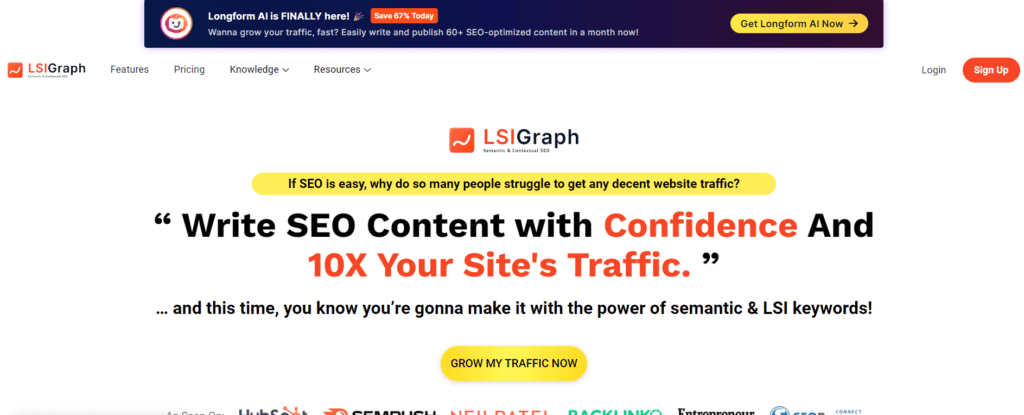
Features:
Offers LSI keyword suggestions based on your primary term, generating a list of semantically related keywords.
Pros:
User-friendly interface, easy for beginners to grasp, offers contextual insights into each keyword.
Cons:
Limited number of free searches per day.
Pricing:
Free limited version. Premium plans start at $27/month.
#2. Twinword Ideas
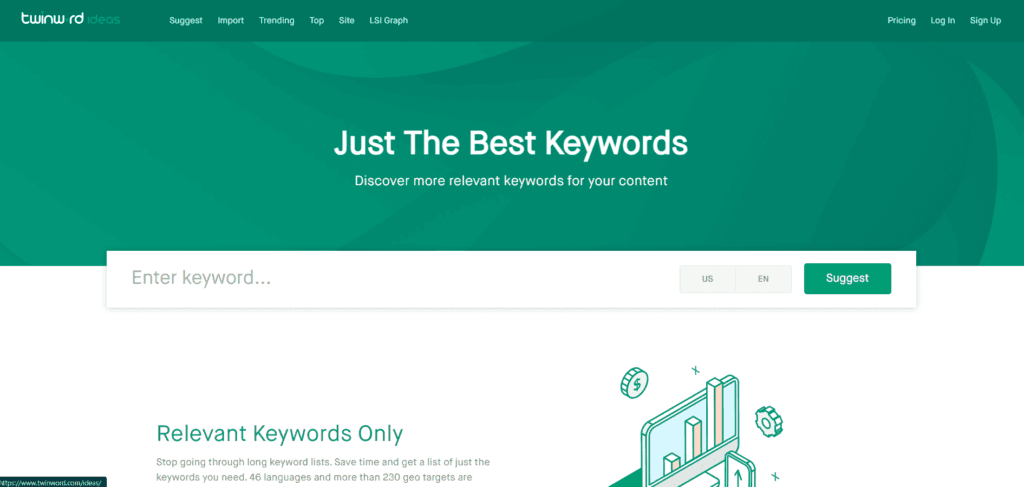
Features:
Provides LSI keyword suggestions with a unique ‘topic tagging’ feature, clustering semantically related keywords.
Pros:
Comprehensive keyword data, includes user intent categorization, and a visual keyword graph.
Cons:
Might be overwhelming for new users due to its extensive feature set.
Pricing:
Plans start at $18/month.
#3. SEMRush
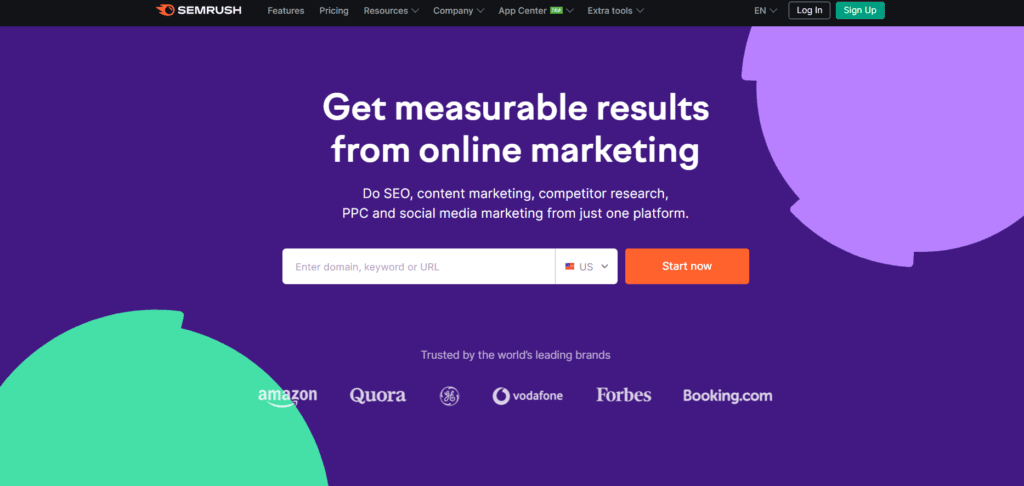
Features:
Comprehensive SEO suite that offers LSI keyword identification among its myriad tools.
Pros:
Provides a holistic view of SEO metrics, robust keyword research tools, and competitor analysis.
Cons:
Pricier than standalone LSI tools, steeper learning curve.
Pricing:
Plans start at $119.95/month.
#4. Ahrefs
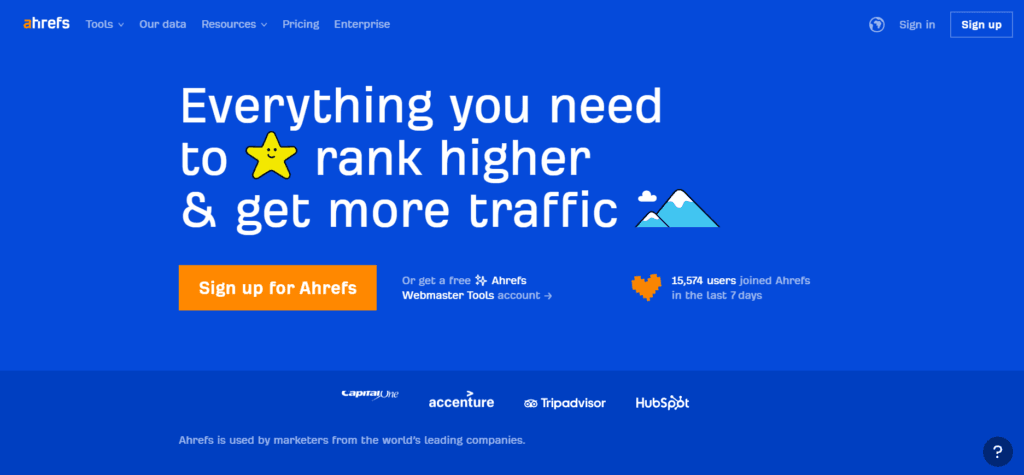
Features:
SEO analysis tool with capabilities to identify organic keyword competitors and LSI terms.
Pros:
Rich backlink data, in-depth keyword analysis, user-friendly interface.
Cons:
No free version available, might be expensive for small businesses.
Pricing:
Starting at $99/month.
#5. Niche Laboratory

Features:
Generates LSI keywords along with insights on competitor keyword usage and discussions related to the niche.
Pros:
Visual breakdown of keyword data, offers a broader understanding of the niche.
Cons:
Interface can be a bit dated and clunky.
Pricing:
Free.
#6. KeywordTool.io

Features:
Provides keyword suggestions from multiple platforms including Google, Bing, and YouTube.
Pros:
Extensive keyword data, no account required for basic searches, intuitive interface.
Cons:
In-depth data and LSI suggestions reserved for pro users.
Pricing:
Pro plans start at $69/month.
#7. TextOptimizer
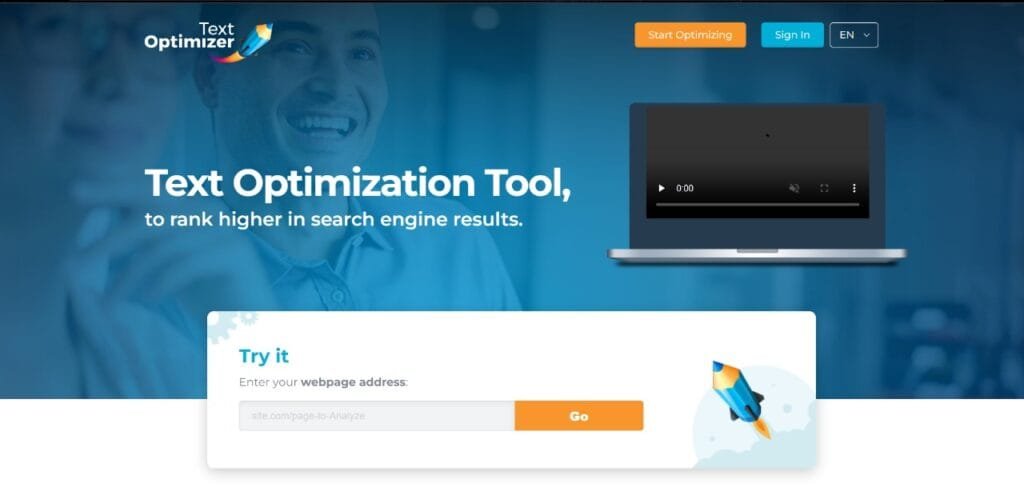
Features:
NLP-powered tool that suggests content improvements and LSI terms to include.
Pros:
Can improve content coherence, visually appealing suggestions with context.
Cons:
Requires understanding of its NLP mechanism to use effectively.
Pricing:
Starting at $60/month.
#8. KWFinder by Mangools
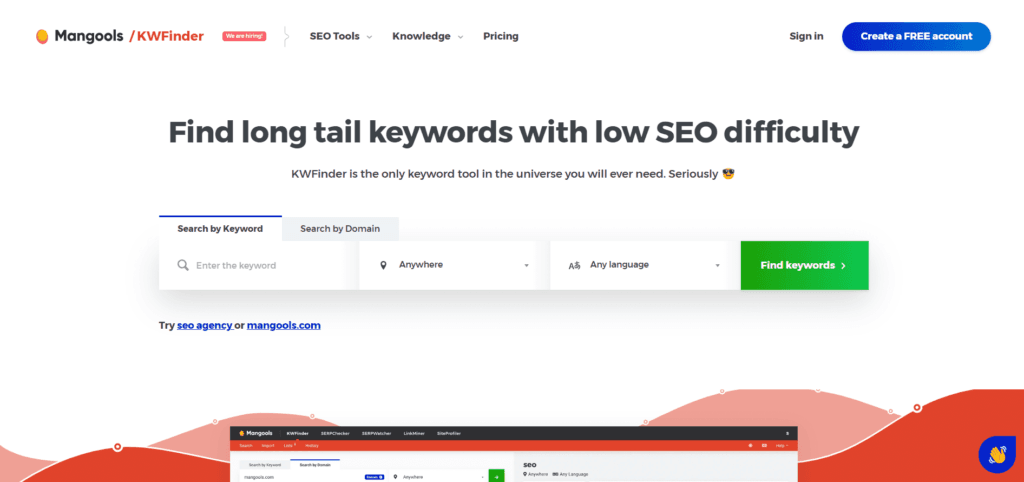
Features:
Offers keyword research with LSI suggestions, SERP analysis, and SEO metrics.
Pros:
User-friendly, visually appealing data representation, includes difficulty scores for keywords.
Cons:
LSI features might be limited compared to specialized LSI tools.
Pricing:
Starting at $49/month.
#9. UberSuggest
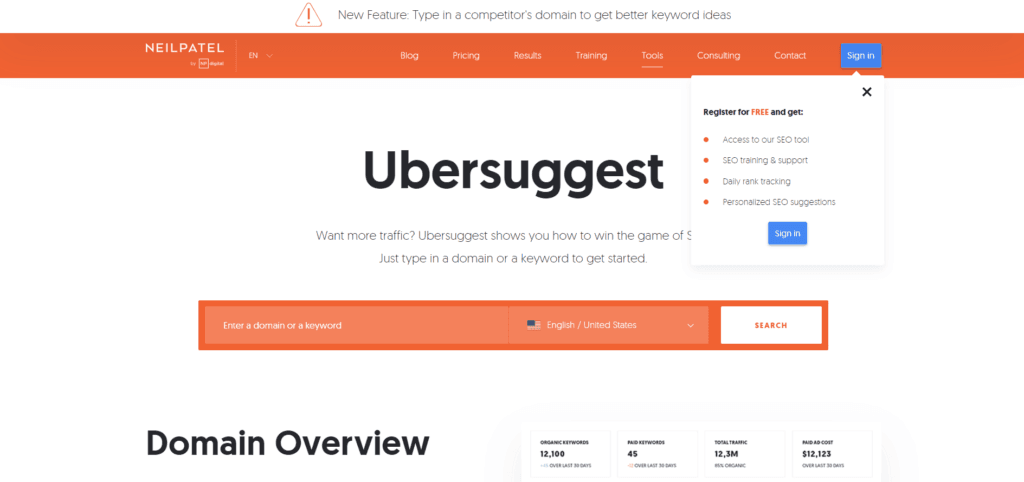
Features:
SEO tool suite with LSI keyword suggestions, backlink data, and site audit capabilities.
Pros:
Comprehensive SEO insights, simple interface, good for beginners.
Cons:
Depth of LSI suggestions might be shallower than specialized tools.
Pricing:
Free limited version. Premium plans start at $29/month.
#10. Serpstat

Features:
All-in-one SEO platform offering LSI keyword research, domain analysis, and other SEO metrics.
Pros:
Extensive database of keywords, user-friendly dashboard, robust competitor analysis.
Cons:
The broad scope might overshadow its LSI features.
Pricing:
Starting at $69/month.
#11. SEO Chat LSI Keyword Generator
Features:
A straightforward LSI keyword generator based on a primary term.
Pros:
Free to use, no-frills approach, easy for beginners.
Cons:
Limited in its features and depth compared to other tools.
Pricing:
Free.
#12. Keyword Revealer

Features:
Provides LSI keyword suggestions, keyword difficulty scores, and content analysis.
Pros:
Simple interface, comprehensive data on keywords.
Cons:
Limited free searches per day.
Pricing:
Basic plan starts at $9.97/month.
#13. Soovle

Features:
Gathers keyword suggestions from multiple platforms in a single interface.
Pros:
Free, offers a broad view of keyword suggestions from different platforms.
Cons:
Lacks depth in LSI keyword analysis.
Pricing:
Free.
#14. Keywords Everywhere

Features:
Browser extension that provides keyword data, including LSI suggestions, directly in search results.
Pros:
Convenient, offers real-time keyword insights, extensive database.
Cons:
Can only be used within supported browsers.
Pricing:
Pay-as-you-go, starting at $10 for 100,000 credits.
#15. CognitiveSEO
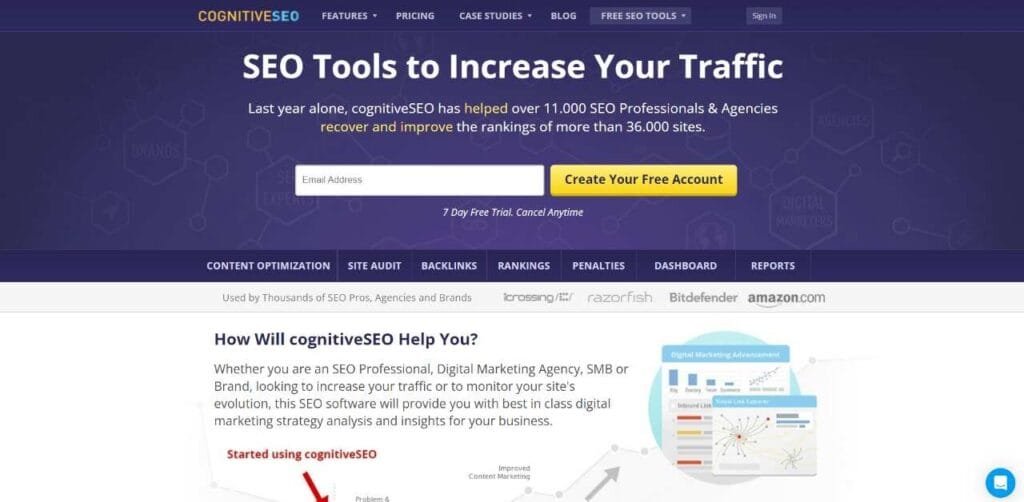
Features:
Comprehensive SEO tool offering keyword suggestions, content analysis, and backlink data.
Pros:
In-depth content analyzer, includes sentiment analysis, and LSI keyword suggestions.
Cons:
Might be overkill for users only seeking LSI tools.
Pricing:
Starting at $129.99/month.
Each of these tools offers unique functionalities tailored to different needs. For a comprehensive content strategy, startup founders and C-level executives should consider a mix of tools, keeping the business’s goals, budget, and technical expertise in mind.
Potential Pitfalls and Over-Optimization
While LSI plays a pivotal role in modern SEO, it isn’t the magical elixir to top rankings. Over-reliance or misuse can have counterproductive effects. For decision-makers, understanding these pitfalls ensures that your content strategy remains robust, adaptable, and, most importantly, effective.
The Risks Associated with Over-relying on LSI
- Compromising Content Quality: An obsession with incorporating LSI keywords can sometimes overshadow the primary goal—delivering value to the reader. There’s a thin line between a comprehensive article and one that’s merely a collage of semantically related terms.
- Diluting Main Keyword Significance: LSI keywords should complement the main keyword, not overshadow it. Overstuffing content with LSI terms can dilute the importance of the primary keyword, affecting its ranking potential.
- Ignoring Broader SEO Principles: SEO is multifaceted. Overemphasis on LSI can lead to neglecting other crucial aspects like technical SEO, backlinking strategies, or on-page optimization.
Balancing LSI Optimization with Other SEO Strategies
Integrate, Don’t Isolate: Consider LSI as a part of your broader content strategy. Integrate it seamlessly with your primary keyword strategy, ensuring neither is compromised.
Stay Updated with SEO Best Practices: The digital landscape evolves rapidly. Regularly update your knowledge and be prepared to adapt. What’s effective today might be obsolete tomorrow.
Diversify Your Strategy: Don’t put all your eggs in the LSI basket. Balance it with robust technical SEO, a user-friendly site structure, high-quality backlinks, and, most importantly, valuable content.

Future of LSI and Semantic Search
Predictions on the evolution of LSI in SEO.
The landscape of SEO is perpetually evolving, with search engines consistently refining their algorithms to better understand user intent and offer more accurate results. Given the current trajectory, we can forecast a few developments concerning LSI:
Greater Emphasis on Context: As AI and machine learning continue to play an increasingly integral role in search algorithms, search engines will get even better at discerning context. This means LSI, as a tool to provide context, will become more crucial than ever.
Sophistication in Understanding Synonyms and Variants: Search engines will not only recognize exact LSI keywords but will be proficient in identifying synonyms, variants, and even regional language differences, making content optimization more nuanced.
Integration with Voice Search: With the rise of voice-activated assistants like Siri, Alexa, and Google Assistant, there’s a shift towards natural language queries. LSI will play a pivotal role here, helping search engines decipher the context of spoken queries.
The growing importance of AI and machine learning in search.
AI and machine learning are transforming many industries, and search is no exception. Google’s use of RankBrain, an AI-powered component, to help process search results, is a testament to this shift. With AI, search engines can analyze vast amounts of data at unprecedented speeds, improving their understanding of context and intent.
For instance, if a user searches for “apple” after reading news about tech products, AI can deduce they’re likely referring to the tech company, not the fruit. LSI aids this process by offering a broader context within content, allowing AI algorithms to determine relevancy more effectively.
Machine learning, a subset of AI, enables search engines to learn from user behaviors. Over time, they can predict which content will be deemed most valuable for specific queries, refining and enhancing the accuracy of search results. In this evolving landscape, content optimized with LSI will likely stand out, as it provides richer context for these learning algorithms.
Wrapping it up
Latent Semantic Indexing (LSI) has emerged as a pivotal element in contemporary SEO strategies, bridging the gap between traditional keyword optimization and the richer, context-driven content search engines now prioritize. As we navigate an era where search engines strive for deeper understanding, LSI offers content creators a tool to better align with this nuanced approach.
Embracing LSI isn’t about chasing algorithms; it’s about enhancing content relevance and user experience. With the dawn of AI and machine learning in search, the significance of context will only amplify.
For businesses aiming to remain competitive in the digital landscape, integrating LSI thoughtfully into content strategies is not just beneficial—it’s imperative.
Read Next:
- Local Citations and NAP Consistency for Local SEO: A Deep Dive!
- SEO vs. PPC: Which Brings in More Traffic and Leads?
- How AI LLMs will Revolutionize SEO (in 2023): Our Insights!
- How to Create a Marketing Plan: The Definitive Guide
- How to Create an Inbound Conversion Funnel: A Deep Dive





















Comments are closed.